Occupational Safety Training for Operating a Heat Gun
99,000 ₫
Note: The above price is calculated for one person and may vary depending on the number of trainees participating in the course and market fluctuations. For more accurate pricing support, please refer to the price list or contact our consultants directly.
Occupational safety is an important issue when operating a heat gun and needs to be addressed promptly to ensure the health and safety of workers and enhance the reputation of businesses here. The Occupational Safety Training course is one of the effective solutions to raise awareness on preventing workplace accidents for workers when operating a heat gun.
Table of Contents
Toggle1. Overview of Hot Air Gun
a. What is a Hot Air Gun?
A Hot Air Gun is a device that uses high temperatures to generate a stream of hot air. It is commonly used in various applications such as metal welding and processing, plastic welding, drying, softening plastic pipes, heat cutting plastic, and many other tasks that require high temperatures or hot air flow.
The hot air gun operates by using a fan motor to create an airflow and then employing a heat source (usually a halogen lamp or a heating element) to heat the air. The hot airflow is then adjusted in temperature and direction to perform specific tasks, such as welding or drying. Hot air guns have multiple applications in different industries and are an essential tool for processing and repair work.

b. Operating Principle of a Hot Air Gun
The operating principle of a Hot Air Gun is based on using high temperatures to heat and control airflow. Here’s how it works:
- Generating airflow: The hot air gun uses a fan motor to produce airflow. This airflow can be adjusted for speed and pressure depending on the specific application.
- Generating high temperature: The hot air gun uses a heat source, typically a halogen lamp or heating element, to heat the airflow. The temperature can be adjusted to achieve the required level for the task. A temperature control system is commonly used to maintain and regulate the desired temperature.
- Adjusting hot airflow: The hot air gun allows the user to adjust the direction and intensity of the hot airflow. This can be done via buttons or switches on the device or through control accessories such as heat nozzles.
- Applying heat to materials: By directing the hot airflow onto the material, the hot air gun transfers high temperature to it. This high temperature can be used to soften, weld, dry, or perform other tasks depending on the application.

c. Industries Using Hot Air Guns
Hot Air Guns are used in many industries due to their versatility and efficiency in applying high temperatures and hot air. Here are some main industries that use hot air guns:
- Electronics industry: Hot air guns are often used for soldering and softening electronic components like printed circuit boards (PCBs), wires, and surface components.
- Metal industry: In metalworking, hot air guns can be used for welding and processing metal parts, heat cutting, softening copper pipes, and many other applications.
- Plastic and rubber industry: Hot air guns are used to weld, soften, and process plastic and rubber products, including repair and shaping.
- Wood industry: In woodworking, hot air guns can be used to dry and soften wood, as well as to smooth wooden surfaces.
- Printing and packaging industry: Hot air guns can help accelerate ink drying or bond printed and packaged products.
- Automotive industry: In automotive manufacturing, hot air guns can be used to repair or soften plastic and rubber components, as well as to dry adhesives and tapes.
- Refrigeration and air conditioning industry: Hot air guns can soften copper pipes and plastics in refrigeration and HVAC applications.
- Repair and maintenance: Hot air guns are commonly used in repair and maintenance for tasks such as removing adhesives, softening pipes, and repairing various materials.
2. Overview of Safety Training for Hot Air Gun Operation
a. What is Occupational Safety Training?
- Occupational safety training for operating hot air guns provides sessions to raise awareness about accident prevention for workers. Workers directly operating hot air guns fall into Group 3.
- The safety training course helps workers recognize and avoid hazards, reducing the risk of accidents during work.
REGISTER FOR OCCUPATIONAL SAFETY TRAINING
b. Training Duration
Initial safety training duration:
- Total training time is at least 24 hours, including assessment time.
- 8 hours of theoretical lessons on safety policies and labor hygiene laws
- 8 hours of theoretical lessons on basic occupational safety and hygiene knowledge
- 4 hours of theoretical lessons on specialized training content
- 2 hours of practical lessons on specialized training content
- 2 hours of theoretical exam at the end of the course
The training center will schedule sessions based on workers’ availability. Typically, there are 6 sessions, with the course running over 3 days, provided the company can allocate continuous training time.
Periodic safety training duration:
- Before the occupational safety card expires, workers who need renewal must undergo periodic occupational safety training, with periodic training time being at least 50% of the initial training duration.
Explanation: The total periodic safety training duration is at least 12 hours, including assessment. After completing the periodic training and passing the exam, workers will have their occupational safety card renewed.
c. Training Content
| No. | TRAINING CONTENT | TRAINING DURATION (HOURS) | |||
| Total | Including | ||||
| Theory | Practice | Exam | |||
| I | Safety policies, laws, and labor hygiene system | 8 | 8 | 0 | 0 |
| 1 | Overview of regulations and legal documents on occupational safety and hygiene. | 6 | 6 | ||
| 2 | Standards and technical regulations on occupational safety and hygiene. | 1 | 1 | ||
| 3 | Specific regulations by state management agencies on safety and hygiene when constructing, expanding, or renovating facilities, and using, storing, and inspecting machines, equipment, materials, and substances requiring strict safety and hygiene. | 1 | 1 | ||
| II | Basic knowledge of occupational safety and hygiene | 8 | 8 | 0 | 0 |
| 1 | Basic knowledge of hazardous and harmful factors at the workplace. | 4 | 4 | ||
| 2 | Methods to improve working conditions. | 1 | 1 | ||
| 3 | Safety culture in production and business. | 1 | 1 | ||
| 4 | Rights and obligations of employers and workers; policies regarding occupational safety; roles and duties of safety staff. | 1 | 1 | ||
| 5 | Safety rules, signage, personal protective equipment, first aid skills, and occupational disease prevention. | 1 | 1 | ||
| III | Specialized training content | 6 | 4 | 2 | 0 |
| Comprehensive knowledge of machines, devices, hazardous substances; risk analysis, assessment, and management; safe work procedures with machines, devices, and hazardous substances. | 6 | 4 | 2 | ||
| IV | Final safety training assessment | 2 | 2 | 0 | 0 |
| Total | 24 | 22 | 2 | ||
See more training content for all 6 groups
d. Occupational Safety Card
After completing the safety training and passing the exam, workers will receive a Group 3 occupational safety card (commonly referred to as a Group 3 safety certificate).
The card shows details such as name, date of birth, job and working environment, training duration, official stamp, and signature confirming course completion.
According to Article 24 of Decree 44/2016/ND-CP, there are two cases:
- If the employer and employee have a labor contract, the employer must sign, stamp, and authenticate the card after the worker completes the training from a certified training unit and passes the exam.
- If the worker is freelance or temporary, without a labor contract, the training unit must sign, stamp, and authenticate the card after the worker completes the training and passes the exam.

3. Hazards When Operating a Hot Air Gun
Operating a hot air gun can pose several hazards, especially if safety rules are not followed. Here are some common hazards when using a hot air gun:
- Risk of burns and fire: Hot air guns heat air to high temperatures, and if safety rules are not followed, users may get burned or cause a fire in the surrounding environment. Always follow safety rules when using a hot air gun and avoid direct contact with the hot air stream.
- Toxic fumes and vapors: Hot air guns may produce toxic fumes if used in poorly ventilated areas. For example, using the gun to remove adhesives or chemical products can release harmful vapors. Ensure work is done in a well-ventilated environment and, if necessary, use respiratory protective equipment.
- Impact on eyes and skin: The hot air stream can harm eyes and skin. Users should wear safety goggles and protective clothing if needed.
- Explosion risk: In environments with flammable gases, a hot air gun can cause explosions if not used properly. Avoid using the gun in flammable environments and always check the surroundings before use.
- Electrical hazards: Improper maintenance or use of a hot air gun can pose electrical risks. Ensure the device is correctly connected and shows no signs of damage.
- Hazardous waste materials: Hot air guns are often used to remove adhesives and other chemical products. Handle hazardous waste safely and follow environmental regulations.

4. Measures to Prevent Workplace Accidents When Using a Hot Air Gun
To prevent workplace accidents when operating a hot air gun, follow these safety measures:
- Training and education: Ensure users are fully trained on how to operate the hot air gun safely. They should know how to adjust temperature, control airflow, and use personal protective equipment.
- Use personal protective equipment: Users should wear safety goggles, masks, heat-resistant gloves, and protective clothing if necessary.
- Check the device before and after use: Inspect the hot air gun to ensure it is functioning correctly and free from damage before use. After use, turn off the device and clean it before storage.
- Use in well-ventilated areas: Ensure proper ventilation to remove toxic fumes or flammable gases. Avoid using the gun in flammable environments.
- Check materials before use: Ensure that the material can withstand the heat and airflow. This is especially important for plastics and rubber during repair or fabrication.
- Avoid direct contact: Do not touch the hot air stream directly. Use proper tools or attachments to control the airflow safely.
- Follow manufacturer instructions: Adhere to the manufacturer’s guidelines regarding temperature and proper use.
- Handle hazardous materials safely: Dispose of adhesives or chemical residues according to safety and environmental regulations.
- Check the power supply: Ensure the device is connected correctly and shows no signs of damage.
- Stay focused and alert: Pay attention while using the hot air gun and avoid distractions.
- Regular inspection of the hot air gun to detect safety issues such as wear, damage, or mechanical faults early, thereby reducing the risk of workplace accidents.
5. Benefits of Occupational Safety Training
An Toàn Nam Việt provides businesses with the following benefits upon completing occupational safety training courses according to Decree 44/2016/ND-CP on occupational health and safety for companies, factories, and enterprises:
- Workers can identify potential workplace hazards and take preventive measures to avoid accidents.
- Businesses can implement risk prevention measures in production, operation, and maintenance processes.
- Reduce costs associated with workplace safety incidents.
- Uninterrupted production improves labor productivity and product quality.
- Ensure compliance with occupational safety laws, reducing legal risks.
- Enhance credibility and professionalism, boosting the company’s brand image.
An Toàn Nam Việt’s training courses serve as a preventive solution to protect individuals from external hazards that could lead to injury or even death.
REGISTER FOR OCCUPATIONAL SAFETY TRAINING SERVICE
6. Customer Feedback After Completing Training
An Toàn Nam Việt has many years of experience collaborating with businesses across Vietnam, particularly in southern provinces. This responsibility is highly valued, which is why our occupational safety training is increasingly professional. Our growth has been fueled by both positive feedback and constructive suggestions from clients. Below are testimonials from our partners:
See more customer interviews after using our services at An Toàn Nam Việt
7. An Toàn Nam Việt’s Occupational Safety Training Capability
An Toàn Nam Việt is a reputable and high-quality occupational safety training center in Vietnam, providing continuous training sessions at factories, workshops, and construction sites nationwide (all 63 provinces in Vietnam).
REGISTER FOR OCCUPATIONAL SAFETY TRAINING SERVICE
Occupational Safety Training License
- An Toàn Nam Việt has been inspected and certified by the Department of Safety under the Ministry of Labor, Invalids and Social Affairs for occupational safety training, reinforcing our strong training capability.

Training Materials and Lectures
- All training materials are reviewed to ensure accuracy and effectiveness before being used in our occupational safety courses.
- Our teaching methods are standardized according to An Toàn Nam Việt’s approach, developed by occupational safety experts to maximize knowledge retention.
Facilities
- Controlling classroom factors improves teaching performance and knowledge retention.
- Our training facilities include spacious classrooms with adequate lighting and training equipment.
8. Nationwide Reputable Occupational Safety Training Center
At An Toàn Nam Việt, we prioritize professional occupational safety training. Our goal is to teach workers how to protect themselves safely while contributing to national development.
We meticulously prepare tools, teaching materials, audio, and lighting to ensure effective training. Our instructors are experienced experts, with research in hazard identification across industries.
Lectures are practical and engaging, aligned with Decree 44/2016/ND-CP, helping workers learn how to prevent hazards and apply safety measures in real work scenarios.
Our training center provides professional and reputable occupational safety training with advantages such as:
- Competitive training costs while maintaining quality.
- Flexible training schedules aligned with company production.
- Fast and compliant certification procedures.
- Experienced instructors with many years in the field.
- Controlled classrooms to optimize teaching effectiveness.
- Lectures tailored to corporate occupational safety needs.
- Dedicated and professional support for clients.

9. Additional Occupational Safety Training Resources
- Occupational Safety Training Materials
- Safety Materials for Operating Hot Air Guns
- Occupational Safety Training Test Materials
- Hot Air Gun Safety Quiz
- Hot Air Gun Safety Training Slides
1 review for Occupational Safety Training for Operating a Heat Gun
No comments yet

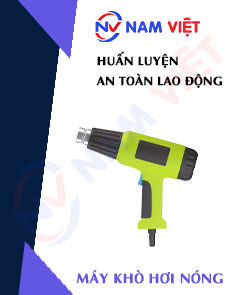
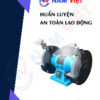
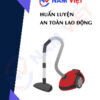



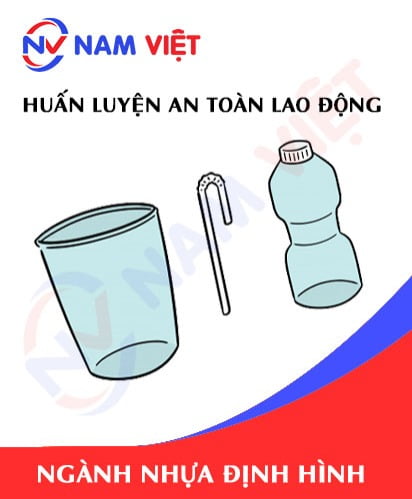



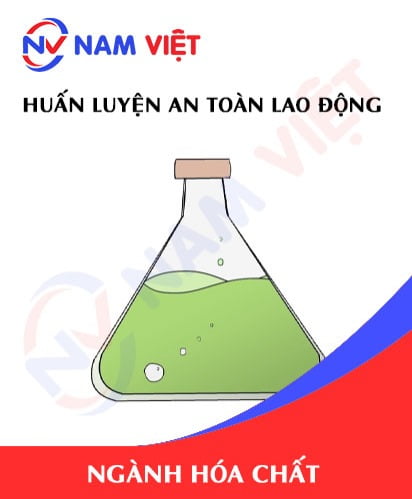
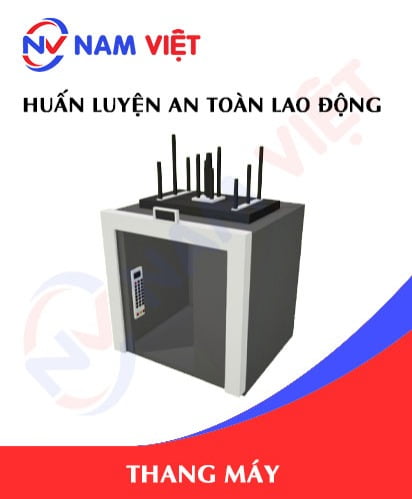


phanminhhang341
Hài lòng với cách tổ chức lớp học